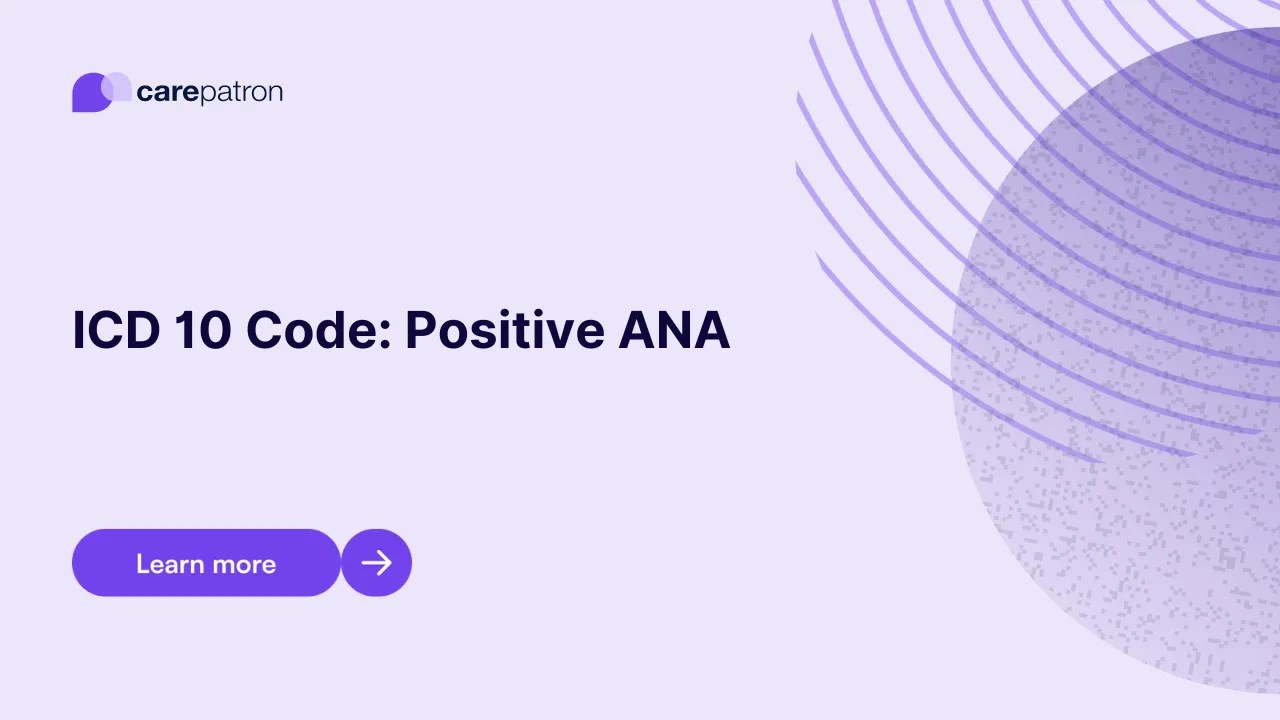The moment a medical test result arrives stating "positive ANA" can often be accompanied by more questions than answers. For many, this phrase, combined with references to cryptic identifiers like "ICD-10," plunges them into a labyrinth of medical terminology. This article aims to demystify these complex medical concepts, providing clarity and context for patients and the public alike, bridging the gap between clinical jargon and accessible understanding.
Editor's Note: Published on July 19, 2024. This article explores the facts and social context surrounding "positive ana icd 10 your questions answered in plain english".
Understanding the ANA Test
The Antinuclear Antibody (ANA) test is a common screening tool utilized by healthcare professionals, particularly when evaluating symptoms that might suggest an autoimmune disease. Autoimmune conditions arise when the body's immune system mistakenly attacks its own healthy tissues, identifying them as foreign invaders. ANAs are specific antibodies that target components within the nucleus of a cell.
A "positive ANA" result signifies the presence of these antibodies in the blood. It is crucial to understand that a positive ANA is not, in itself, a definitive diagnosis of an autoimmune disease. Instead, it serves as an important indicator that warrants further investigation. The test is highly sensitive for conditions like Systemic Lupus Erythematosus (SLE), often known simply as lupus, but its specificity is lower, meaning many individuals without autoimmune disease may also test positive. Factors such as age, certain medications, infections, and even some cancers can lead to a transient or persistent positive ANA result.
"Receiving a positive ANA result often sparks immediate anxiety, and rightly so. Our role as clinicians is to translate that result into understandable terms, explaining that it's a piece of a larger diagnostic puzzle, not the final word. Effective communication at this stage is paramount to managing patient fears and guiding appropriate next steps."
Decoding the "Positive"
When an ANA test returns positive, the next steps typically involve a deeper dive into a patient's medical history, a thorough physical examination, and often, additional, more specific blood tests. The strength of the positive result, known as the "titer" (e.g., 1:80, 1:160, 1:320), and the "pattern" of the antibodies (e.g., homogeneous, speckled, centromere) observed under a microscope, provide critical clues. Higher titers and specific patterns tend to correlate more strongly with certain autoimmune conditions.
A low-titer positive ANA might be present in a significant percentage of the healthy population and may not indicate any underlying disease. Conversely, a high-titer positive ANA, especially when accompanied by characteristic symptoms such as chronic fatigue, joint pain, skin rashes, or unexplained fevers, strongly suggests the need for consultation with a specialist, typically a rheumatologist. These specialists possess the expertise to interpret the complex interplay of symptoms, ANA results, and other diagnostic markers to arrive at an accurate diagnosis, such as lupus, Sjogren's syndrome, scleroderma, or mixed connective tissue disease.
